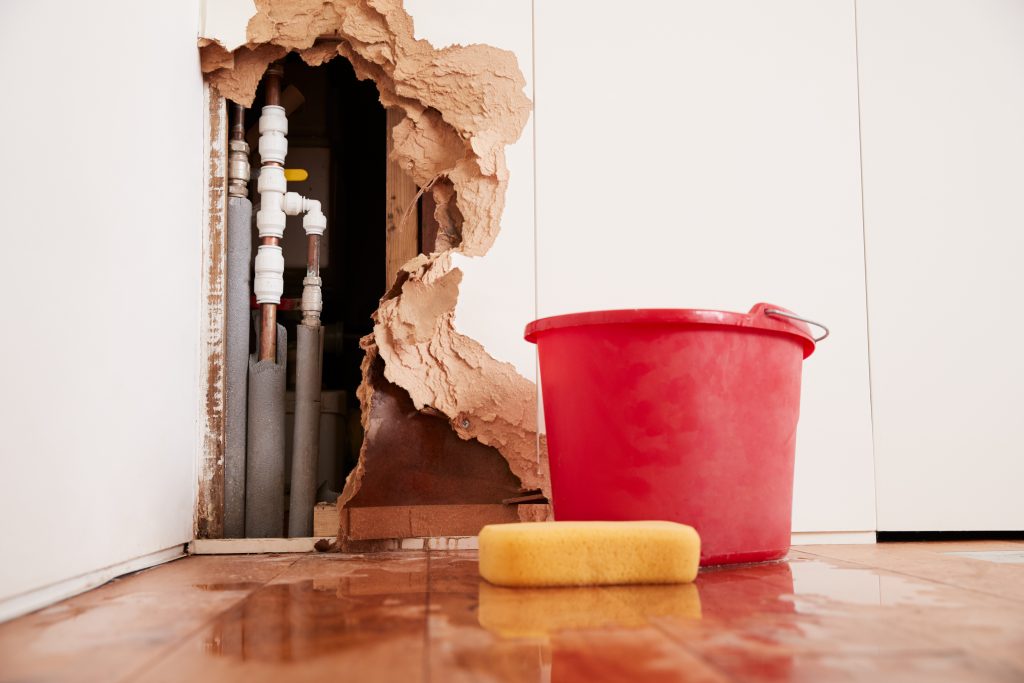Find Concealed Water Line Leaks: Six Ingenious Detection Tips
Find Concealed Water Line Leaks: Six Ingenious Detection Tips
Blog Article
This article following next pertaining to Top leak detection hacks is exceedingly remarkable. Have a go and make your own personal findings.

Early discovery of dripping water lines can minimize a prospective calamity. Aside from conserving you money, it will certainly lessen the aggravation and irritation. The moment you locate a leak, calling your plumber for repairs is the very best option. Nevertheless, some small water leakages may not be visible. If you can not find it with your nude eyes, right here are some hacks that assist.
1. Examine the Water Meter
Every home has a water meter. Inspecting it is a surefire way that helps you find leakages. For starters, shut off all the water resources. Ensure no one will flush, utilize the faucet, shower, run the washing maker or dish washer. From there, most likely to the meter and also watch if it will change. Since no person is utilizing it, there need to be no movements. If it moves, that indicates a fast-moving leakage. Likewise, if you detect no changes, wait an hour or two and also check back once again. This means you may have a slow-moving leak that might also be below ground.
2. Check Water Usage
If you identify unexpected modifications, despite your intake being the exact same, it implies that you have leakages in your plumbing system. An unexpected spike in your bill suggests a fast-moving leak.
Meanwhile, a constant increase on a monthly basis, despite the very same routines, reveals you have a slow leakage that's likewise slowly escalating. Call a plumber to completely check your home, specifically if you really feel a cozy area on your flooring with piping beneath.
3. Do a Food Coloring Test
When it comes to water usage, 30% comes from commodes. If the color in some way infiltrates your dish throughout that time without flushing, there's a leakage between the tank and dish.
4. Asses Exterior Lines
Do not neglect to examine your outside water lines as well. Must water permeate out of the connection, you have a loose rubber gasket. One tiny leakage can throw away lots of water and increase your water bill.
5. Examine the situation and also evaluate
Home owners ought to make it a habit to examine under the sink counters and also inside cabinets for any bad odor or mold growth. These 2 warnings indicate a leakage so punctual interest is required. Doing routine inspections, even bi-annually, can save you from a significant issue.
Inspect for stainings and compromising as a lot of home appliances and pipelines have a life expectancy. If you think dripping water lines in your plumbing system, don't wait for it to intensify.
Early detection of leaking water lines can reduce a potential calamity. Some small water leaks may not be noticeable. Checking it is a proven method that helps you discover leakages. One small leak can squander heaps of water as well as surge your water costs.
If you believe leaking water lines in your plumbing system, do not wait for it to escalate.
WARNING SIGNS OF WATER LEAKAGE BEHIND THE WALL
PERSISTENT MUSTY ODORS
As water slowly drips from a leaky pipe inside the wall, flooring and sheetrock stay damp and develop an odor similar to wet cardboard. It generates a musty smell that can help you find hidden leaks.
MOLD IN UNUSUAL AREAS
Mold usually grows in wet areas like kitchens, baths and laundry rooms. If you spot the stuff on walls or baseboards in other rooms of the house, it’s a good indicator of undetected water leaks.
STAINS THAT GROW
When mold thrives around a leaky pipe, it sometimes takes hold on the inside surface of the affected wall. A growing stain on otherwise clean sheetrock is often your sign of a hidden plumbing problem.
PEELING OR BUBBLING WALLPAPER / PAINT
This clue is easy to miss in rooms that don’t get much use. When you see wallpaper separating along seams or paint bubbling or flaking off the wall, blame sheetrock that stays wet because of an undetected leak.
BUCKLED CEILINGS AND STAINED FLOORS
If ceilings or floors in bathrooms, kitchens or laundry areas develop structural problems, don’t rule out constant damp inside the walls. Wet sheetrock can affect adjacent framing, flooring and ceilings.
https://www.servicemasterbyzaba.com/blog/how-to-detect-water-leakage-in-walls/

Do you appreciate reading about Leaking water lines? Try leaving a short review below. We'd be interested to see your opinion about this article. We hope that you visit us again later on. Sharing is good. You just don't know, you could be helping someone out. I treasure reading our article about Finding hidden leaks.
Contact for excellence! Report this page